Understanding Digital Life Cycle Assessments (DLCAs)
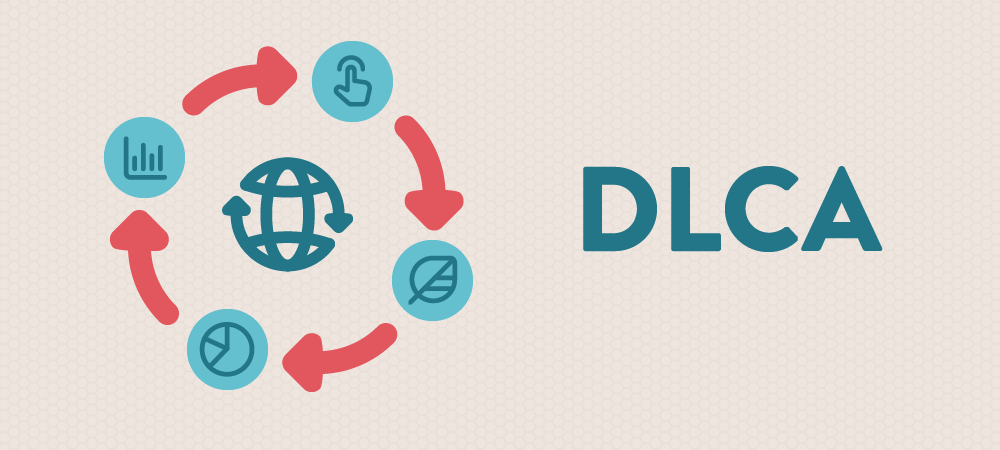
What’s the best way to get the most accurate environmental data on your organization’s digital footprint? Try a Digital Life Cycle Assessment (DLCA). In this post, we explore why DLCAs are important and cover some important things to consider before running one.
Learning the environmental impact of your organization’s digital products and services is a complicated (and ongoing) endeavor. However, it’s also an important part of understanding your organization’s overall impact. You can’t reduce what you don’t measure.
More importantly, better understanding your organization’s digital footprint can help you lower costs, improve efficiency, reduce risks, and manage emissions more effectively. There are no down sides to this.
What is a Digital Life Cycle Assessment?
Lifecycle assessment lets us better understand the true impacts of any given good or service. It’s important information for scientists, consumers, and policymakers alike.
— Rachael Nealer, What is Lifecycle Assessment—and Why Does it Matter?, Union of Concerned Scientists
Life Cycle Assessments (LCAs) use scientific methods to help organizations better understand the environmental impacts of a product, material, process, or activity. LCAs cover all stages of a studied entity’s life cycle, from concept to disposal, often referred to by the industry as cradle-to-grave or cradle-to-cradle if a product or service embraces circularity principles.
LCAs have historically been the purview of academic researchers. However, they have many commercial applications as well. They also sometimes inform external stakeholders, such as ESG investors, on factors that might influence funding decisions based on perceived risk.
LCAs typically include four phases:
- Manufacturing phase: extracting raw materials, production, release of product or service from factor or production facility
- Distribution phase: transporting a product or service from factory to user
- Use phase: electricity consumption and other impacts related to product or service use
- End-of-life phase: impacts related to the disposal or recycling of product materials
Similarly, a Digital Life Cycle Assessment applies the rigor of an LCA process specifically to digital products and services. From the IT department’s data center to the websites, mobile apps, and third-party digital services your organization creates and uses to maintain business continuity, DLCAs are designed to provide useful insights across the system. In turn, these insights can be used to devise impact-focused solutions and long-term governance plans.
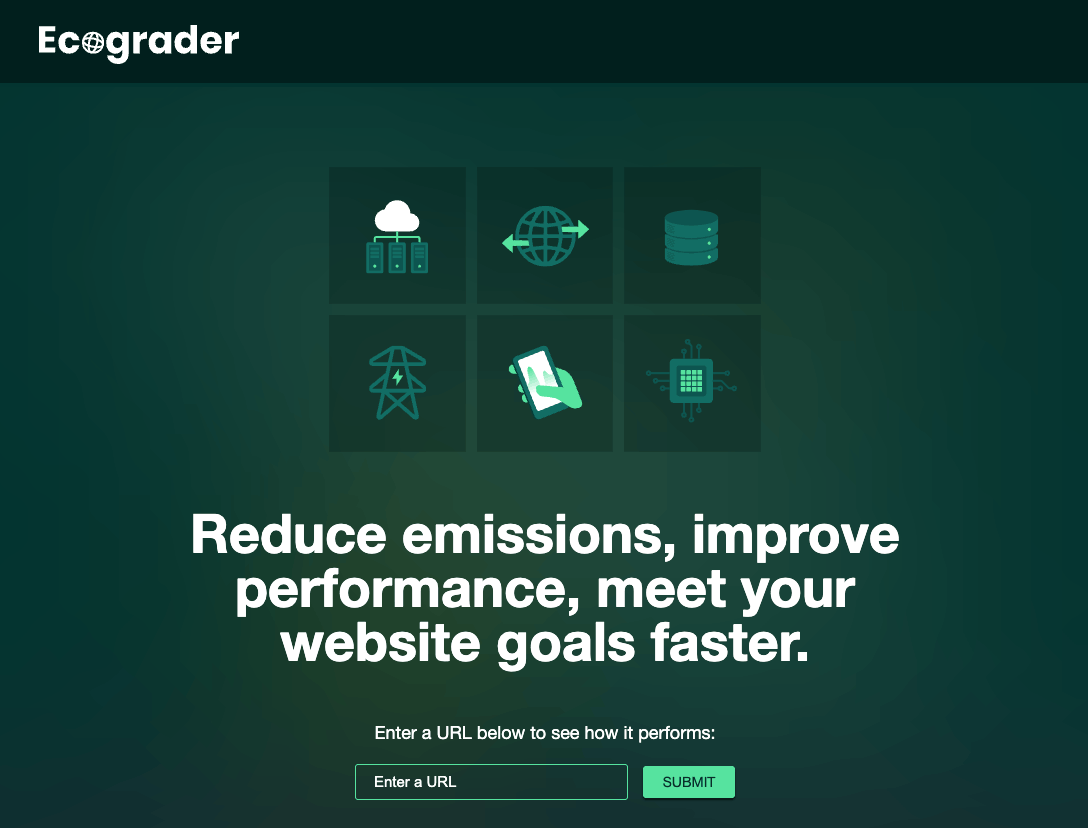
Where Protocols and ‘Calculators’ Fall Short
Measuring actual energy usage along the entire tech stack is the only way to get truly accurate website carbon emissions figures. By doing that, you no longer rely on models and the assumptions they make.
— Fershad Irani, Why web perf tools should be reporting website carbon emissions
Unfortunately, the Greenhouse Gas Protocol, the world’s most commonly used carbon accounting framework, doesn’t provide great guidelines for digital products and services beyond hardware. This is fine if you want to audit the routers and printers your office uses. However, so many businesses are enabled by digital products and services across departments, disciplines, and business units.
Whether they are created and used internally or come from third-party suppliers, digital products and services power contemporary organizations. It’s just how business is done. Unfortunately, because the digital ecosystem is so complex, tracking impacts in any meaningful way is challenging.
However, a rising number of internet-based digital emissions estimation tools—often referred to as website carbon calculators—exist. These can be useful to help people quickly understand the potential environmental impact of, say, a company website.
Unfortunately, automated tools are only as good as the data that is available to them. Sometimes, that’s not enough to paint a truly accurate picture. For example, automated website accessibility testing typically only catches about one-third of all potential issues.
Similarly, tools like Website Carbon and our own Ecograder provide you with basic information about the possible emissions impact of a publicly available URL or website. However, they make some assumptions about system segments that could be replaced with more meaningful data if you have access to it.
A DLCA can help you reveal these data points.
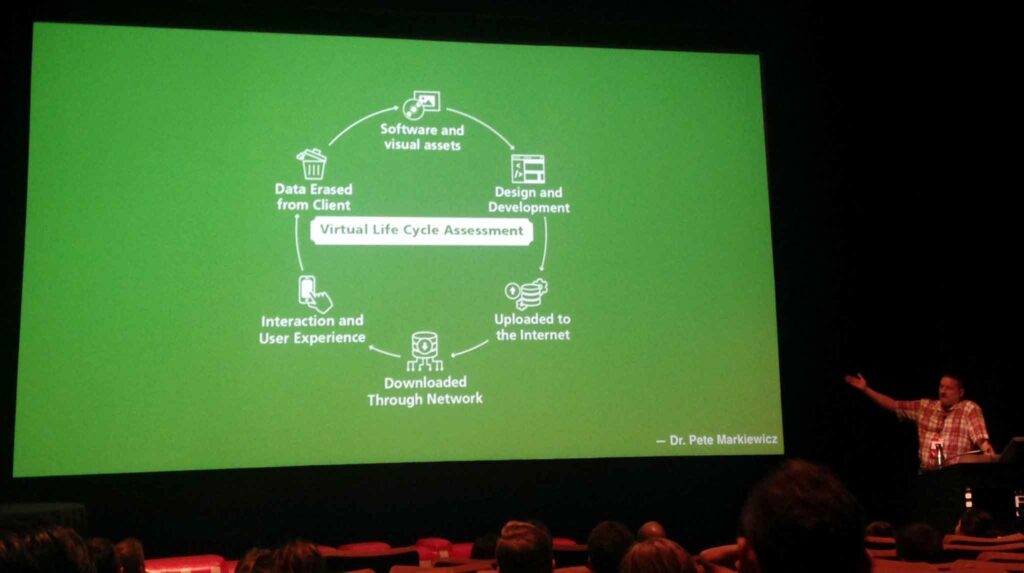
Why Are DLCAs Important?
A systemic approach to change is fundamental. The industrial revolution saw a tenfold increase in humanity’s mechanical and energy capacity, but brought with it an environmental sacrifice that has taken us centuries to fully comprehend. The digital revolution will bring about equally fundamental changes – be they ecological, social, economic, democratic or geopolitical. We need to ensure that we do not usher in a similar Trojan horse.
— David Cormand & Kim van Sparrentak, Digital Technologies In Europe: An Environmental Life Cycle Approach
Digital Life Cycle Assessments are important for a few reasons:
- Nearly every organization owns and operates one or more websites, mobile apps, web apps, and so on.
- Most software products, including websites, rely on third-party widgets, plugins, APIs or other external services in their digital supply chain to function properly.
- Most organizations use social media, online subscription services, and other third-party or cloud-based services or suppliers to manage key business and marketing operations.
- Many organizations also operate some level of digital hardware, including internal server rooms, data centers, closed networks, and so on.
A Digital Life Cycle Assessment can help an organization set a baseline for its digital footprint. In turn, this can provide the basis for continuous improvement over time. DLCAs are a good place to get started with digital sustainability. However, if it’s your first time and you’re not a data-driven organization, you might consider enlisting some help from a trusted advisor or third-party supplier.
DLCA Principles
Life Cycle Assessments have some common principles that are important to their effectiveness:
- Study Function: The function an LCA fulfills helps stakeholders assess different potential solutions, weighing the pros and cons of each. Also, LCAs should have a functional unit to ensure consistency in measurement.
- Multicriteria: LCAs allow you to assess multiple environmental indicators at once, such as global warming potential, resource depletion, water/air/soil pollution, ecotoxicity, biodiversity, and so on.
- Quantitative Analysis: Indicators are described quantitatively to improve objectivity in decision making and place aspects of a product or service on the same scale.
- Cradle-to-Grave/Cradle-to-Cradle: The assessment considers impacts generated during all stages in a product or service’s life cycle, potentially including circularity of materials into new products and services.
- Attribution: LCAs help you define which environmental impacts can be attributed to a product or service over the course of its life cycle.
- Consequences: Finally, LCAs answer the question, what are the direct or indirect potential consequences of decision-making on the system being analyzed?
Each of these can, in some way, be applied to the process of assessing digital products and services.
DLCA Benefits
There are many benefits to running a DLCA. Beyond revealing previously untracked data points, benefits can also include the following:
- Business Value: DLCAs can help organizations maintain business continuity, reduce costs, lower emissions, and improve efficiency.
- Capacity Building: Longer term, DLCAs can also help an organization adopt more sustainable data strategies and build capacity over time.
- Emissions Reduction: They can help web and digital teams drive measurable emissions reduction strategies as an organization grows or evolves.
- Organizational Resilience: DLCAs can also help organizations improve governance and digital resilience, making them more agile and responsive to disruption.
DLCA Challenges
As they are an emerging practice, Digital Life Cycle Assessments have some challenges as well:
- Data Availability: Not all the data you need is readily available. Some exist within closed, third-party systems. Other times, the data sets you need don’t exist at all.
- Tool Availability: While a variety of LCA software tools exist, none specifically focus on digital products and services.
- Perceived Value: As many people still don’t understand digital sustainability, it can be challenging to get team or leadership buy-in to make this investment.
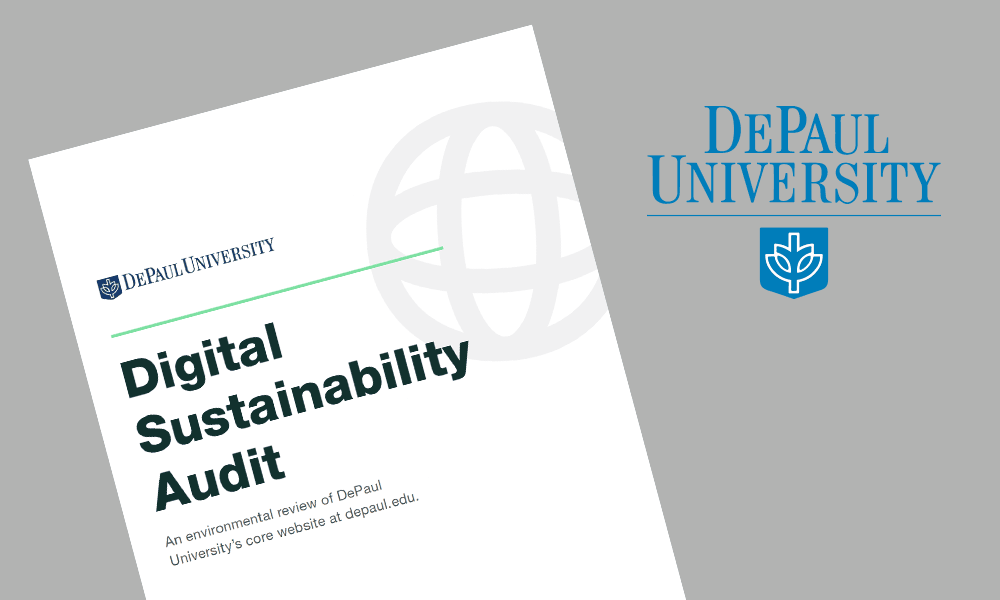
When to Consider a Digital Life Cycle Assessment?
If your organization has a minimal digital footprint, you might not need the rigor of a full assessment. Perhaps you only need to audit the company website or third-party services you use.
However, if your digital footprint is significant or the company itself is digitally enabled with numerous products, services, etc., you might want to consider a DLCA.
Plus, a DLCA provides a great opportunity to include other criteria—like air or soil pollution, water use, resource depletion, biodiversity, or toxicity to humans or ecosystems—in your assessment.
Questions to Consider Before Getting Started on a DLCA
It’s important to understand where digital emissions come from and who’s responsible for them, especially when it comes to Scope 3 emissions. However, you might want to ask the following questions as well:
- Which impacts do you want to track? Are you solely focused on emissions or do you want to understand other impacts like water or resource use?
- Do you need to align with existing sustainability reporting or product standards, like GRI or ISO? If so, which one(s)?
- Do you have the resources, skills, or capacity to undertake this endeavor on your own or do you need to work with a supplier or consultant?
- How will this process enable you to create solutions based on desired outcomes and build capacity over time?
DLCA Steps
Next, here are several steps necessary for a successful Digital Life Cycle Assessment. Not every DLCA will follow this process to the letter. In fact, there are multiple ways to run many of the processes described below. However, to maintain the scope of this post, we’ll focus on the basics.
1. Goal and Scope Definition
First, you’ll need to define project parameters and create clarity on the approach you plan to take. This includes your study’s purpose, the system boundaries you intend to use, and how the decision-making process will work.
Defining Purpose
Focus on why you’re running the DLCA and clearly communicate to relevant parties what you hope to achieve with this effort.
Consider these questions:
- Have you defined clear goals? What outcomes (not outputs) do you hope to achieve?
- Have you appropriately resourced the project so these efforts can be supported long enough to reach those outcomes?
- How will you derive value for organizational stakeholders from this project?
- How does running a Digital Life Cycle Assessment align with your organization’s mission, vision, or values?
Defining System Boundaries
In late 2021, the European Parliamentary Group of the Greens/EFA, along with GreenIT.fr, ran a DLCA on technology use in Europe. In it, the researchers attempted to assess the environmental impact of technology use across the whole of Europe…no easy feat!
Your assessment probably won’t require such broad system boundaries. However, you will need to define realistic boundaries to maintain guardrails for your project. Otherwise, your project could sprawl wildly out of control.
Consider asking these questions:
- Which technological, geographical, or time-based boundaries will give your project the appropriate guardrails?
- Do you plan to include all the organization’s digital products and services, or just one?
- Similarly, will you include onsite hardware in this assessment or just stick to software?
- What about third-party vendors or suppliers (Scope 3)? Will you include them as well?
- How will you address, communicate, and/or compensate for missing data?
- Related, how might you approach identifying and collecting data from various ‘closed’ systems within your boundaries?
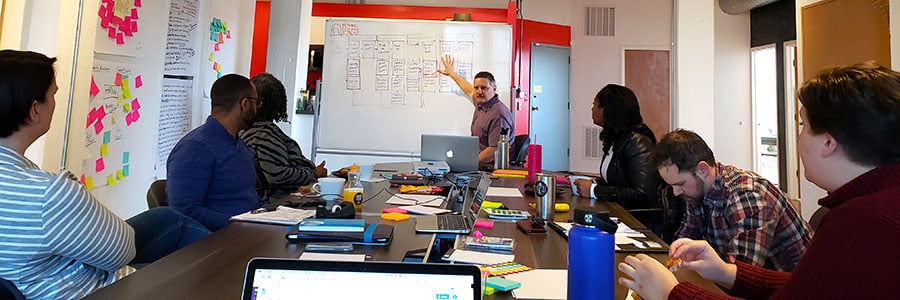
Decision-Making Process
Be clear about how decisions will be made. While we’re big advocates for including stakeholder perspectives into projects like this, you don’t want to bog down the decision-making process with endless committee reviews either. Also, be sure to appoint a decision-maker who has the power to break tie votes and make a final call when it’s required.
Questions to consider:
- Who will be involved in the decision-making process, especially when it comes to collecting and validating data?
- Will you include human and nonhuman stakeholder perspectives in the decision-making process?
- How might you make the decision-making process more inclusive?
- How will you deal with potential changes in scope and deliverables as you learn new things?
2. Life Cycle Inventory
A life cycle inventory is a core component of an LCA. With a clearly defined project plan, you can begin collecting data on relevant input and output flows of the system being studied.
This technical and usually time-consuming process includes data collection, validation, and calculation procedures. It quantifies material and resource flows—usually in the form of inputs and outputs—from processes within the system boundaries you have defined. There are numerous ways to do an inventory analysis, each of which can potentially yield different results, which is why step one above is so important.
Questions to consider for your inventory:
- Is the system input and output information you’re looking for readily available?
- If not, how might your team procure it?
- Are there publicly available LCA databases that can provide the data you need?
- How will you evaluate the quality of the data you collect?
- Where will you allocate the environmental load of different processes or products you’re studying?
System Inputs
Common inventory inputs include energy and raw materials, such as air, water, soil, minerals, metals, and so on.
For digital products and services, this might include:
- Resources used during UX design workshops or strategy planning sessions
- Rare earth minerals and other resources used to create hardware the system uses during one or more phases in its life cycle
- Third-party fonts, scripts, widgets, plugins, APIs, software applications, and other tools used to develop digital products
- Computing power used to design, develop, manage, and maintain products
- Hosting used to stage digital products as they are being developed
System Outputs
Common outputs include emissions, air/water/soil pollution, solid waste, products, co-products, and product use.
For digital products and services, this might include:
- Emissions from app or website use
- Energy used in product hosting and/or data delivery
- Water and resource use associated with product or service hosting, delivery, and use (e.g. water to cool servers in data centers)
- Energy used in collecting, hosting, and managing data associated with product use
- Resources required to maintain and improve a product or service over time
- E-waste associated with product use (e.g. replacement servers, network routers, and other digital devices)
3. Life Cycle Impact Assessment
To accurately gauge the environmental impact of the system you’re studying, you’ll need to classify and weigh the importance of environmental impact indicators collected during the inventory process. This will help you more appropriately interpret data in the next step.
Evaluation
First, select impact categories based on your priorities for the study. For example, will you focus only on emissions or are other resources—like water, air, or soil—also relevant? This will influence the categories you choose and how you characterize data.
Prioritization
Next, assign indicator data pulled from the inventory to each category you’ve chosen (e.g. climate change impacts within a certain time frame and region based on a specific impact model). In other words, how will you order, normalize, or otherwise group and weight the data you’ve collected?
4. Insights and Interpretation
Finally, analyze results from steps two and three above to draw conclusions, provide recommendations that drive decision-making, and suggest potential solutions within the project’s defined scope.
Be transparent about any uncertainties with the data, especially if there are variations in results. Also, summarize in easy to understand language. Onboarding this topic can be challenging at any organization. The fewer barriers-to-entry you create, the easier it will be to take action on potential solutions.
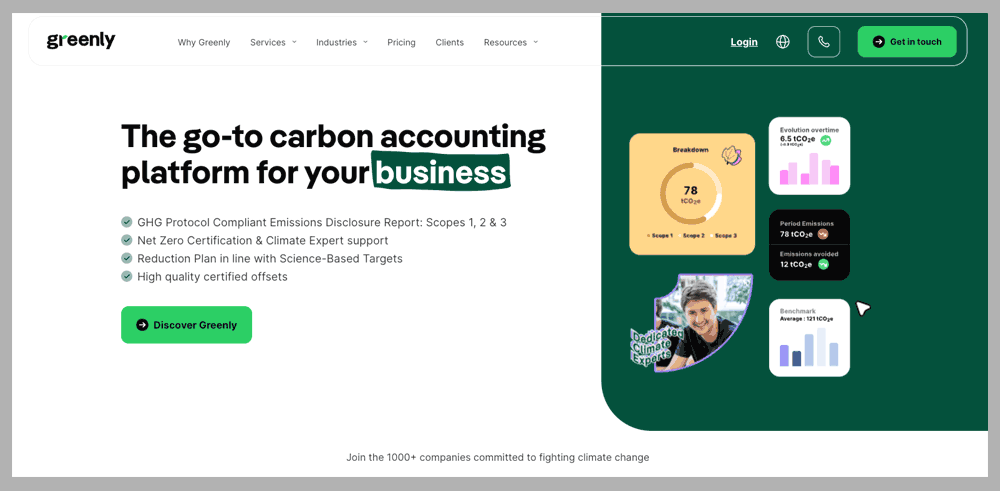
Digital Life Cycle Assessment Tools and Resources
To date, few platforms are available to effectively manage and reduce the performance and environmental impact of digital products and services across an organization. This is especially true for Scope 3 emissions, which includes third-party providers, suppliers, etc.
However, the resources below might help:
- DImpact: a resource portal associated with the University of Bristol that features publications and resources on various topics related to digital sustainability
- CO2.js: a free script from the Green Web Foundation that can be added to any website or application—including our own Ecograder—to return estimates based on the Sustainable Web Design model for estimating digital emissions
- Greenly.Earth: a carbon accounting platform with specific tools for digital emissions
Feedback Effects and Reduction Claims
If I switch to more energy efficient servers and that somehow cuts my web-hosting costs, some consideration of what will be done with the savings is required for a true and honest ecological comparison. For example, if I save my digitally-centered company a ton of money through efficiency and spend the savings on an annual Hawaiian golf retreat for all employees, there’s clearly a need to calculate that newly-created impact and include it in the full assessment scope.
— John Mulrow, co-author, The Cyber-Consciousness of Environmental Assessment
Finally, here’s an important caveat. If you plan to make environmental impact reduction claims based on your DLCA work, you should also consider including discussions—and, more importantly, analysis—of potential feedback effects, as noted in the quote above.
In other words, how will you re-allocate the potential savings that come from reduced costs and improved efficiencies that were created by a DLCA? How might you do this as responsibly as possible?
Similarly, how we talk about these efforts matters. When making claims about digital emissions reductions, IAB Europe, a membership association for the interactive advertising community in Europe, recommends three key things:
- Consider terms like evaluation and assessment over measurement.
- Use Greenhouse Gas (GHG) over carbon dioxide, carbon emissions, CO2e, etc.
- Prioritize GHG estimators or GHG models over carbon calculators.
Using consistent language helps to create consensus, awareness, and understanding around the reality of our current situation with estimating digital emissions.
Getting Long-Term Value From Your DLCA
It is exciting that more web teams, IT departments, marketers, and software developers are prioritizing digital sustainability and want to learn about environmental guidelines for the internet. This bodes well for the future of digital communications and the planet overall.
To create long-term shared value based on these practices, a few things need to happen:
- Standards Alignment: DLCAs should align with existing environmental standards, such as ISO, GRI, B Corp certification, and others.
- Actionable: Solutions should be realistic and within the means of what an organization is able to accomplish while also acknowledging the urgency of our competing environmental crises.
- Capacity Building: These efforts should help organizations build capacity in the spirit of continuous improvement.
- Legislation: Finally, they must be supported by legislation that makes it easy for businesses, nonprofits, and other organizations to understand and report on their impact.
Meanwhile, there’s no time like the present to get started. If you have questions or want to discuss anything in this post, we encourage you to reach out.
Digital Carbon Ratings, now in Ecograder.
Understand how your website stacks up against industry carbon averages with this new feature.
Try Ecograder


